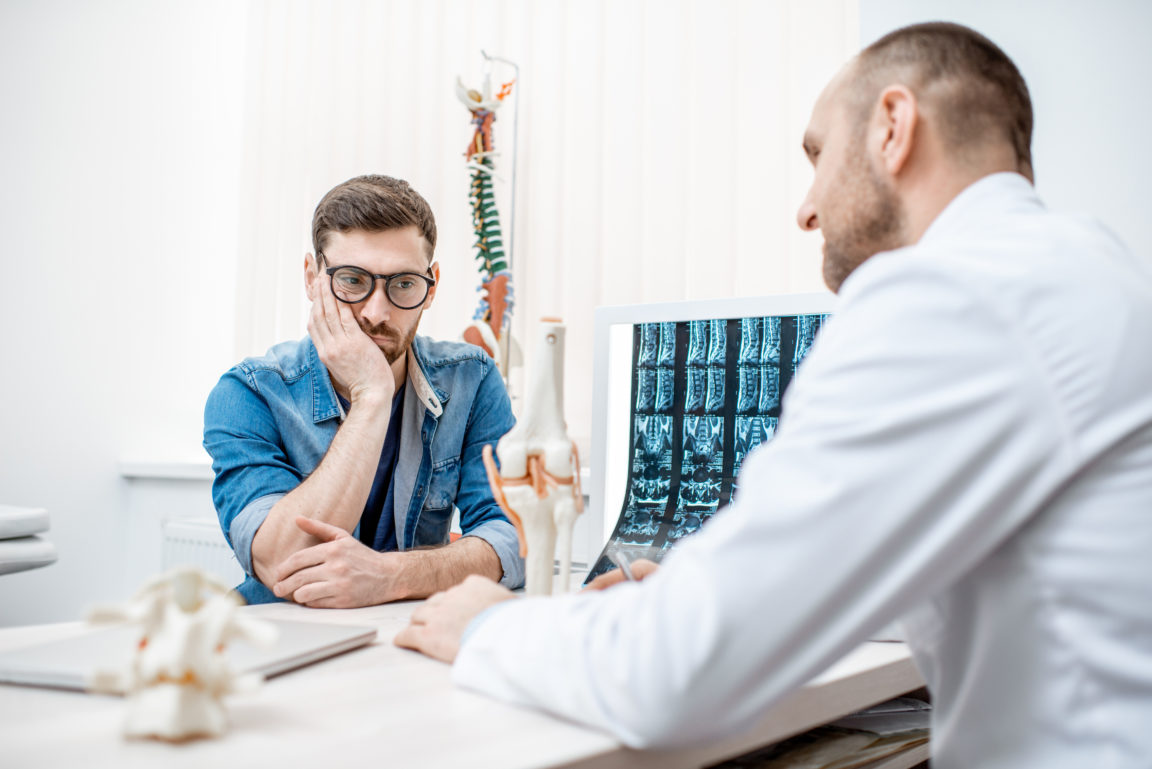Disc herniation happens to the spine, more commonly in the neck and lower back region. It generally causes pain and a decrease in mobility.
The most common cause for disc herniation is trauma to the spine or overuse injuries. A disc condition may also be a result of the normal aging process.
When you visit a doctor to evaluate your condition and further treatment planning, your doctor will give you many treatment options. Some of them may include:
- Administering injections
- Undergoing rehabilitation therapies
- If the severity of your condition is more than you might even be advised to undergo surgery.
Undergoing surgery or receiving injections may sound overwhelming at the initial treatment stage. After surgery, undergoing rehabilitation can be helpful to your body’s recovery.
Among all the rehabilitation therapies, chiropractic therapy has proven to be very effective in helping patients with herniated discs and other disc-related issues.
We have explained disc herniation in detail and some benefits that come with it.
Have a look.
Introduction to Disc Herniation
Before knowing how to manage any problem, it is necessary to understand the issue at hand. Cervical spinal stenosis, for instance, occurs when the spinal canal in the neck narrows, putting pressure on the spinal cord and nerves. The spinal disc loses volume with age, a process that begins around the age of 30 and progresses slowly. It’s important to note certain things to avoid with cervical spinal stenosis,
such as activities that involve excessive neck strain or poor posture, as they can exacerbate symptoms. A herniated disc involves a crack in the outer layer of the disc, known as the annulus, which can lead to further complications if not properly managed. A common question is, “can disc herniations heal?” In many cases, they can improve over time with conservative treatments like physical therapy, rest, and proper posture.
A small part of the disc is affected in disc herniation, which allows the soft material that makes the nucleus pulposus to protrude.
Some of the most common causes for disc herniation include:
- Wear and tear.
- Repetitive movements.
- Lifting the wrong way.
- Injury.
- Obesity.
- Genetics.
Moreover, if you have a herniated disc, the main symptom you will experience is pain.
Some of the other symptoms include:
- Numbness, tingling, or muscle weakness.
- Radiating pain.
- Change in bladder or bowel function.
Many methods are used for the diagnosis of disc herniation. The diagnosis starts by taking a complete history from the patient following a complete physical exam, which will lead to further testing.
The further tests include X-ray, MRI, and myelogram with CT scan. Make sure you do not skip any of these tests, no matter how obvious they may seem.

Chiropractic Therapy for Herniated Disc
Many patients prefer undergoing chemotherapy for disc herniation. The main advantage of undergoing chemotherapy is that it is a non-invasive method and does not involve drugs or injections.
Your visit with the chiropractor will start with taking a good medical history, completing a physical exam, and ordering further tests if needed. The chiropractor will ask you questions regarding your reflexes, nerve function, and muscle tone.
After a complete evaluation, the chiropractor will decide the further treatment course. The treatment plan may include spinal manipulation, therapeutic exercises, and manual therapy. You will be given self-care directions and nutritional recommendations as well.
Your spinal problems might be due to spinal misalignment. Your chiropractor will get to the root of the problem and treat the spine, which will help decrease your pain and help you get better mobility.
If the severity of your issues is advanced, you might be referred to a surgeon or a neurologist as needed.

Final Word
Disc herniation is one of the most common spinal problems people are experiencing nowadays. Some people can deal with the pain, but most of them cannot do so.
If you have symptoms of a hernia, it is best to see a doctor as soon as possible. You can then consider visiting a herniated disc chiropractor for the chiropractic rehabilitation program.
We hope that the above tips on disc herniation were helpful. If you still have any questions, you can ask us in the comments.





